Book:
Little House in the Big Woods by Laura Ingalls Wilder, illustrated by Garth Williams
1971, Harper & Row
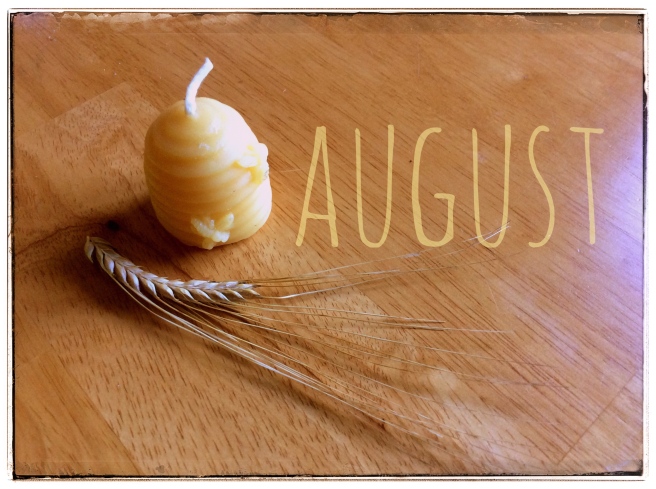
August is the month of first harvests. The 1st of August is Lammas, or Loaf Mass, when people used to bless loaves of bread made from the first crops. Although this is in some ways the longest, sleepiest month of Summer, we are already looking forward to Autumn, and gathering in the rest of the harvest.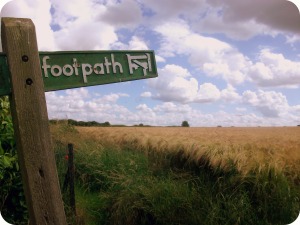 If you go out into the fields now you can see what is growing. Around here it is oats and barley.
If you go out into the fields now you can see what is growing. Around here it is oats and barley.
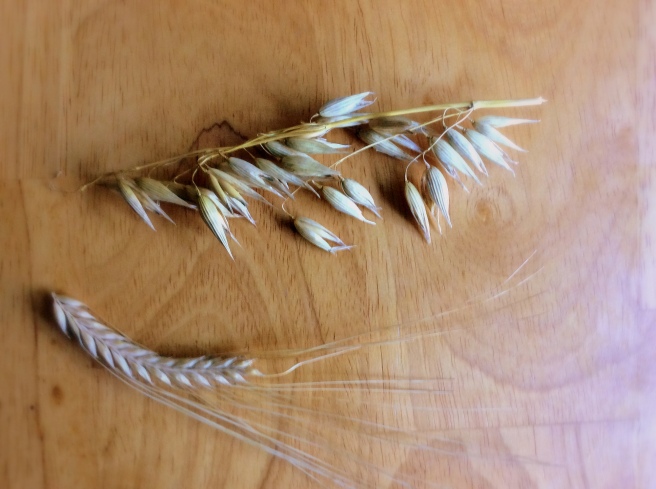
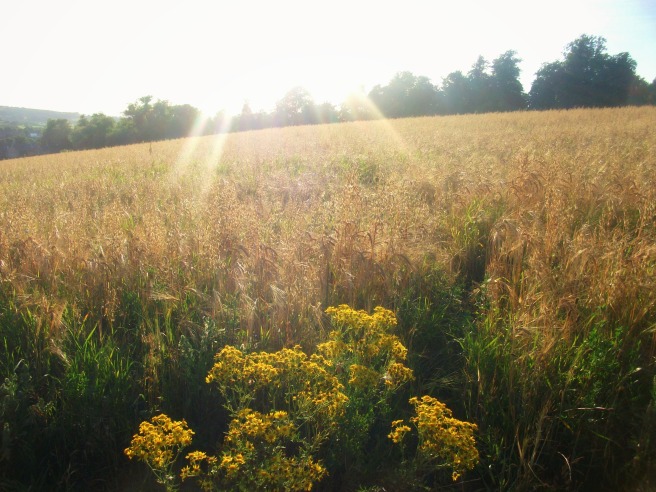
Nowadays we don’t usually see the full process that turns these grains into flour. In Little House in the Big Woods, however, harvest, like everything else, was very hands on. In the chapter entitled “Harvest”, it describes how Pa Ingalls harvested the oats.
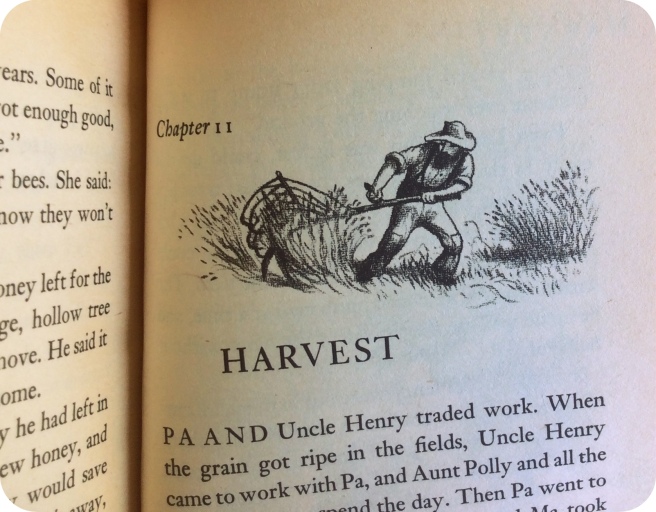
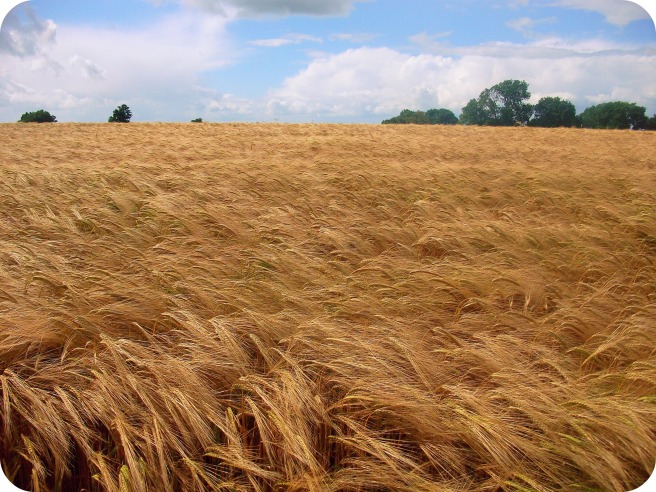
The main drama of this chapter is how the disobedient Cousin Charley gets stung a by a load of yellow jackets. However, I think the grueling description of the harvesting of the oats is more interesting. In the next chapter, “The Wonderful Machine,” Pa sends for a newfangled horsepowered separator to help with the wheat harvest. Pa, who is “all for progress”, is very pleased with this modernisation.
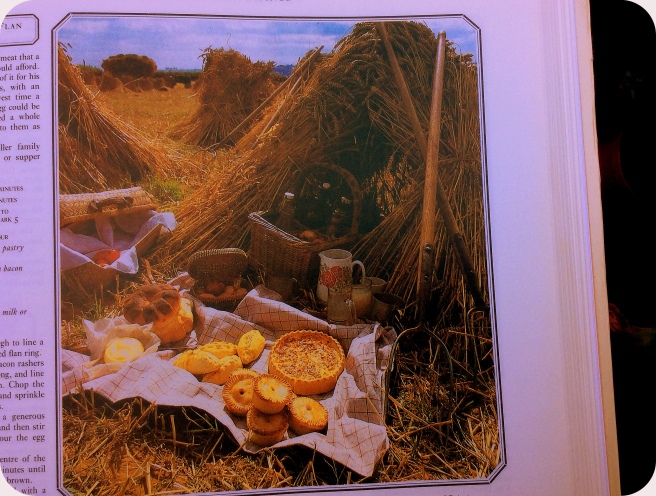
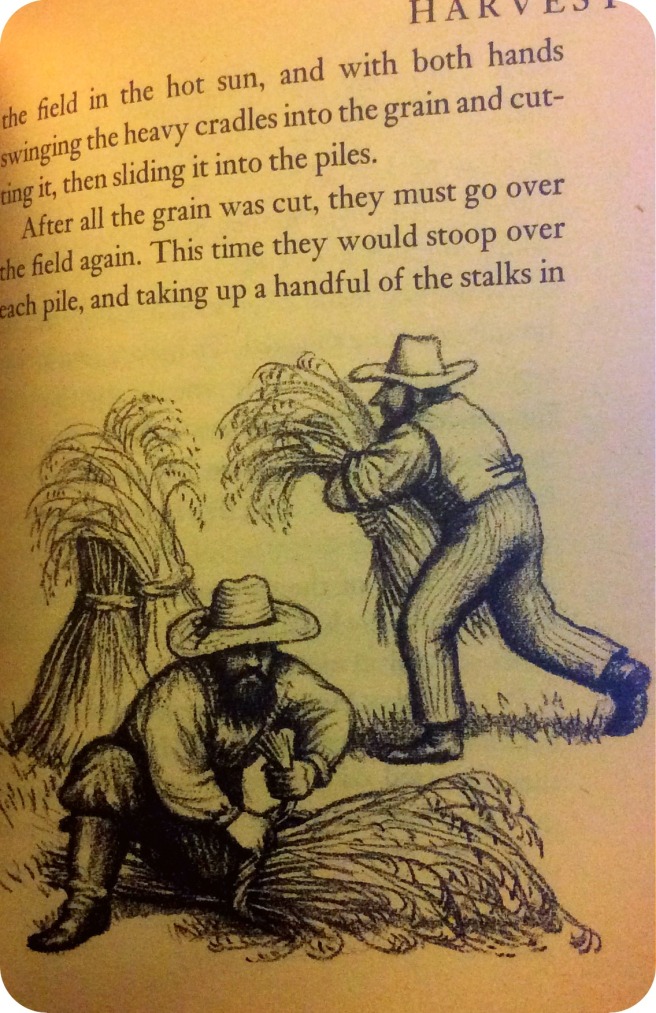 But while the oat harvest was hard work, I’m sure the result was much appreciated.
But while the oat harvest was hard work, I’m sure the result was much appreciated.
One of the best aspects of the Little House books, and one which is perhaps best enjoyed by older readers, is the detailed description of life back then. It really is fascinating to see the hard work which used to go into every little part of life. It provides useful perspective on our own lives.
Little House in the Big Woods is a fun and interesting read. It is a bit long, with some technical/historical language, so it would be difficult for under eights to read on their own. Reading with an adult would also be helpful to deal with some of the harsher realities of that time period. For example, Laura’s family lives with the danger of wild animals actually killing them, there is a quite detailed description of hog butchery, and there is also corporal punishment, when Laura is hit with a strap for slapping her sister. But I think all of these things are not negatives in and of themselves, they just have to be discussed and put into the context of the time period and situation.
Personally, I am certainly not going to be harvesting my own grain anytime soon. My family doesn’t usually eat bread, either. But if you are going to, homemade is best, because you can choose what goes into it. And more important than the bread, to my mind, is what goes on top.
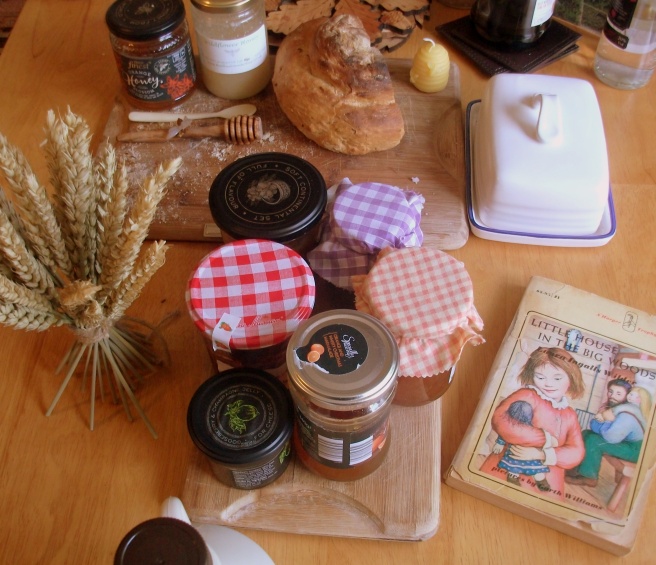
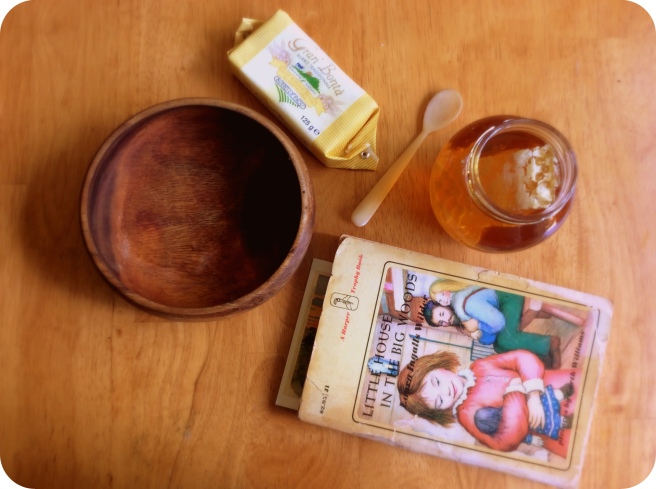 One of the nicest things to go on bread is honey, and that is also something that the Ingalls family harvested for the Winter. In the chapter “Summertime”, Pa finds a bee tree, and comes running back to grab his ax, the two wash tubs, and all the pails and buckets they have. He has to scare a bear away first, but he then is able to chop down the tree and split it open, and bring home lots and lots of honeycomb. It should be remembered that store-bought sugar was a real luxury in those days, so everyone must have been very excited to have all that honey!
One of the nicest things to go on bread is honey, and that is also something that the Ingalls family harvested for the Winter. In the chapter “Summertime”, Pa finds a bee tree, and comes running back to grab his ax, the two wash tubs, and all the pails and buckets they have. He has to scare a bear away first, but he then is able to chop down the tree and split it open, and bring home lots and lots of honeycomb. It should be remembered that store-bought sugar was a real luxury in those days, so everyone must have been very excited to have all that honey!
Laura is sorry for the bees, but Pa says that he has left lots of honey there, and there was another hollow tree nearby. The bees would take the old honey, turn it into new, and store it up for the winter.
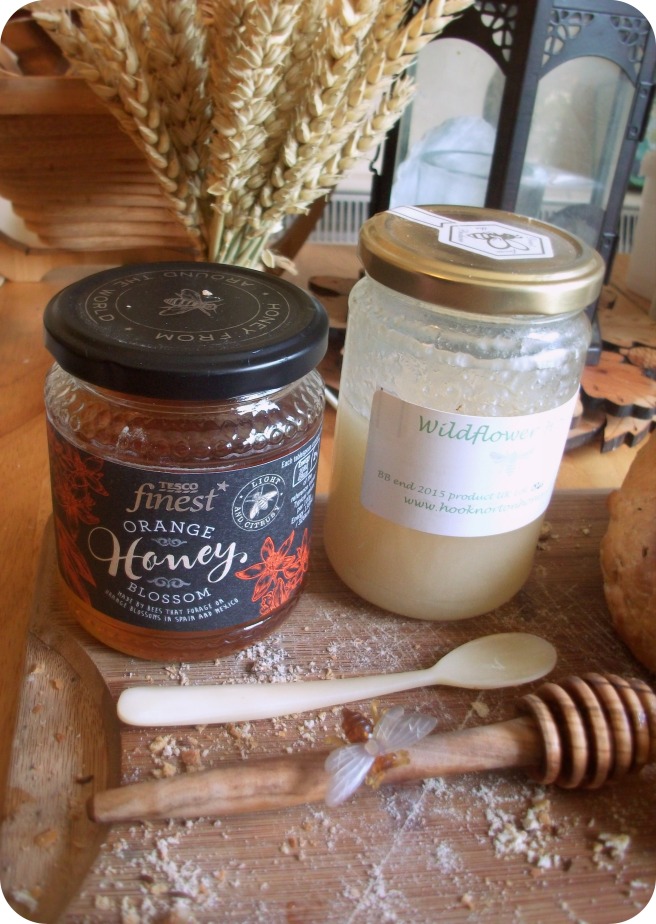 If you can it’s best to buy local, raw honey, that still has all of its goodness. Honeycomb is a bonus!
If you can it’s best to buy local, raw honey, that still has all of its goodness. Honeycomb is a bonus!
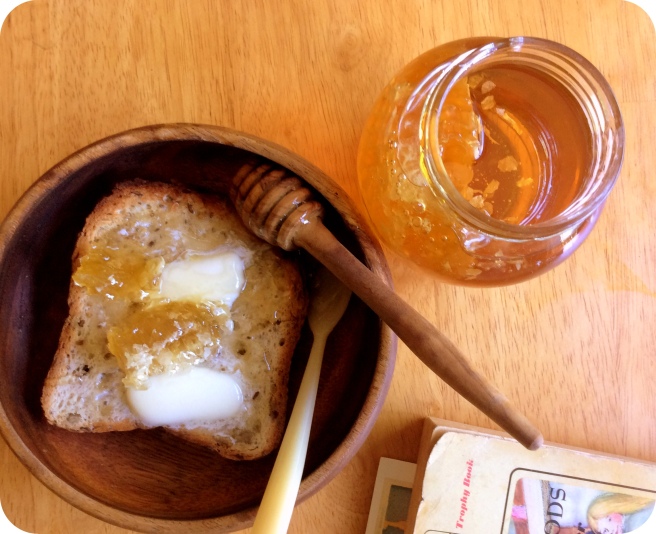
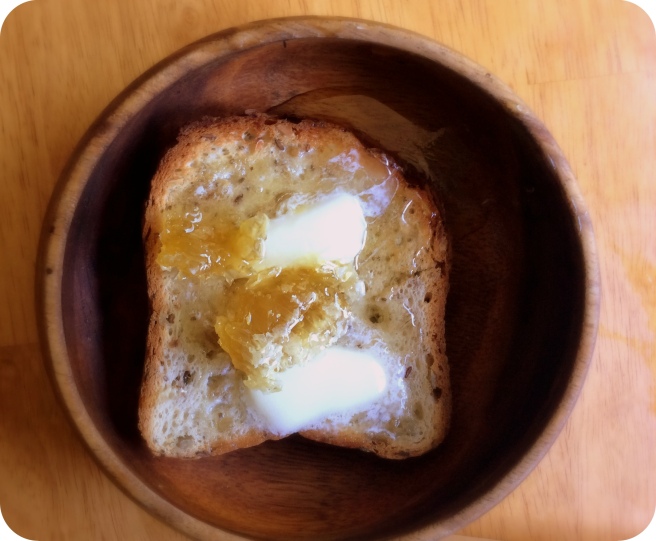 Honey is really lovely with butter, and that is another thing which the Ingalls family had to make all by themselves. This time it was Ma Ingalls who did all the work. The chapter “Winter Days” describes what happened every Thursday, which was the day of the week for churning. Because it takes place in Winter, the cream wasn’t yellow as it was in Summer (when the cows were eating fresh grass). Because Ma liked everything to be pretty, she colored the butter with a carrot that she grated on the bottom of a pan that Pa had punched full of nail-holes for her. She put the grated carrot into hot milk, poured it into a cloth, and squeezed the yellow milk into the crockery churn full of cream which had been put it by the stove to warm. After that Laura and Mary eat the grated carrot as a treat! Next, Ma scalded the wooden churn-dash, put it in the churn, and dropped the churn-cover on top. She would have to churn for a long time, as the cream began to look grainy, and finally there would be a big lump of butter in buttermilk. Ma then took out the butter with a wooden paddle, and washed it many times in cold water, working it with the paddle until the water ran clear. Then the butter was salted. Ma had a butter-mold with a strawberry and its leaves on the bottom.
Honey is really lovely with butter, and that is another thing which the Ingalls family had to make all by themselves. This time it was Ma Ingalls who did all the work. The chapter “Winter Days” describes what happened every Thursday, which was the day of the week for churning. Because it takes place in Winter, the cream wasn’t yellow as it was in Summer (when the cows were eating fresh grass). Because Ma liked everything to be pretty, she colored the butter with a carrot that she grated on the bottom of a pan that Pa had punched full of nail-holes for her. She put the grated carrot into hot milk, poured it into a cloth, and squeezed the yellow milk into the crockery churn full of cream which had been put it by the stove to warm. After that Laura and Mary eat the grated carrot as a treat! Next, Ma scalded the wooden churn-dash, put it in the churn, and dropped the churn-cover on top. She would have to churn for a long time, as the cream began to look grainy, and finally there would be a big lump of butter in buttermilk. Ma then took out the butter with a wooden paddle, and washed it many times in cold water, working it with the paddle until the water ran clear. Then the butter was salted. Ma had a butter-mold with a strawberry and its leaves on the bottom.
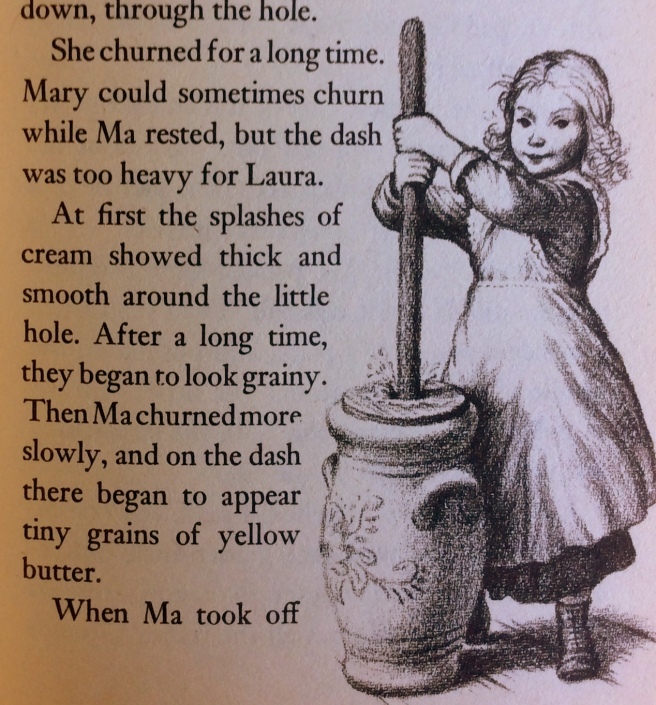
Laura and Mary watched, breathless…while the golden little butter-pats, each with its strawberry on top, dropped on to the plate…Then Ma gave them each a drink of good, fresh buttermilk.
I would love to have a butter-mold! But even without one you can make butter at home. And you don’t need a churn either.
Home-made Butter
Ingredients
1/2 pint heavy (double) cream
Salt to taste
Method
There are various ways to churn the butter. You can use a mixer or a blender, but my preferred method is the good old-fashioned jar. Just pour your cream into a jar which is big enough to leave at least a third of the jar empty. Screw the lid on tightly and shake! It’s a bit of a workout, but it actually only takes a few minutes before you will feel that the cream is not sloshing around anymore. When you check, you’ll find the cream has thickened right up. Keep going a little longer, and you will see the cream has become granular.
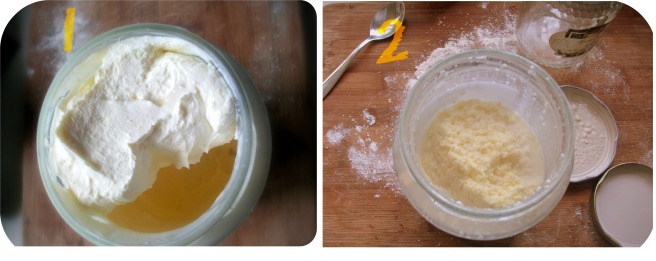 This is normal: those are actually tiny grains of butter! Eventually they will coalesce into larger lumps and a milky-looking liquid.
This is normal: those are actually tiny grains of butter! Eventually they will coalesce into larger lumps and a milky-looking liquid.
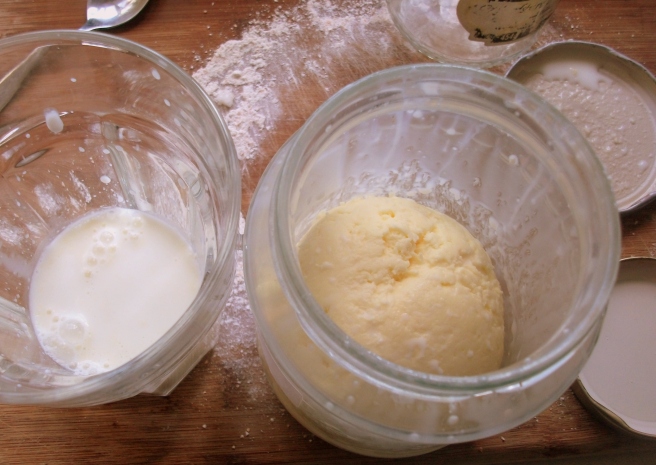
You have your beautiful yellow butter! Now it’s time to wash the butter, pretty much like Ma Ingalls did. Pour off the buttermilk into another container. Don’t throw it away! You can use it in baking or just drink it (Note: this traditional buttermilk, so it is not sour like the cultured buttermilk you can buy in stores)! Put the butter in a bowl and add cold water. Swish and mash the butter around in the water with a wooden spoon. The water will turn cloudy. That’s OK, it’s the last of the buttermilk coming out. Pour the water off and add fresh water. You may have to repeat this a few times until the water stays clear. 
Pour off the last of the water and your butter is done! You can salt it to your own taste, then all there is left to do is shape the butter. Since I don’t have a butter press or mold, I packed it into a silicone cupcake case and left it in the fridge to harden up. In a couple of hours it was ready.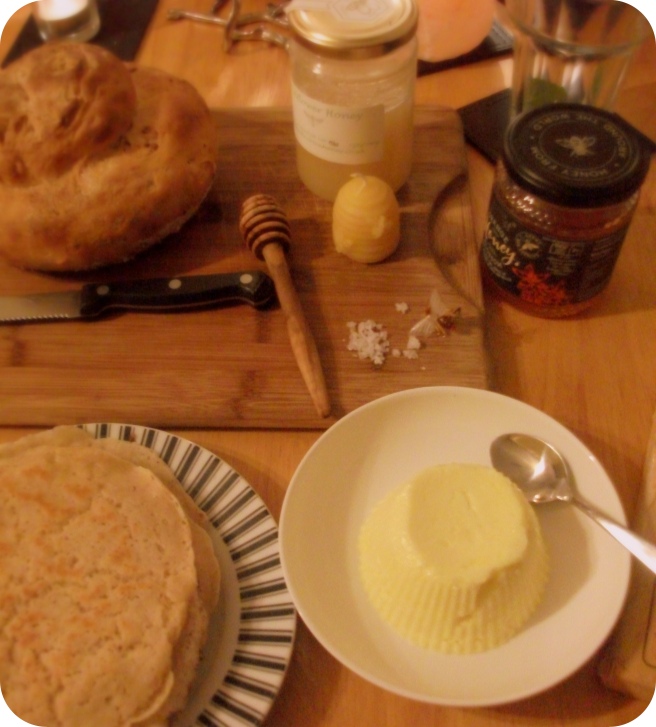
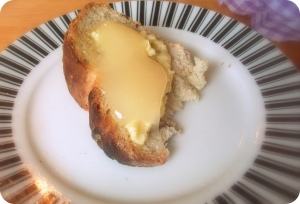 Making butter may seem superfluous nowadays, however I can promise you that homemade butter tastes a million times better than store bought! It is also a fun, easy Science or Home Ec project for kids that doesn’t take more than 20 minutes altogether.
Making butter may seem superfluous nowadays, however I can promise you that homemade butter tastes a million times better than store bought! It is also a fun, easy Science or Home Ec project for kids that doesn’t take more than 20 minutes altogether.
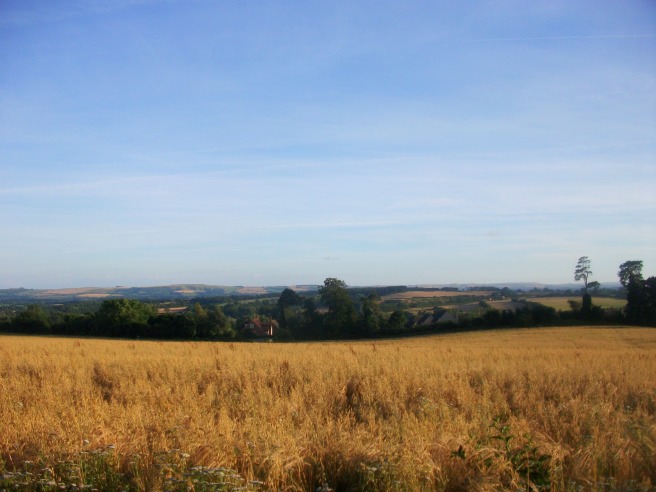
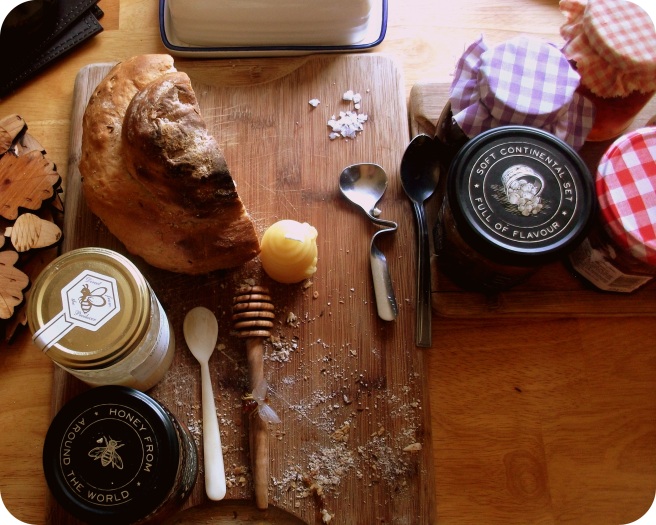
Make some bread to have with your butter and honey, and have a harvest feast. It tastes even better when you have done the work yourself!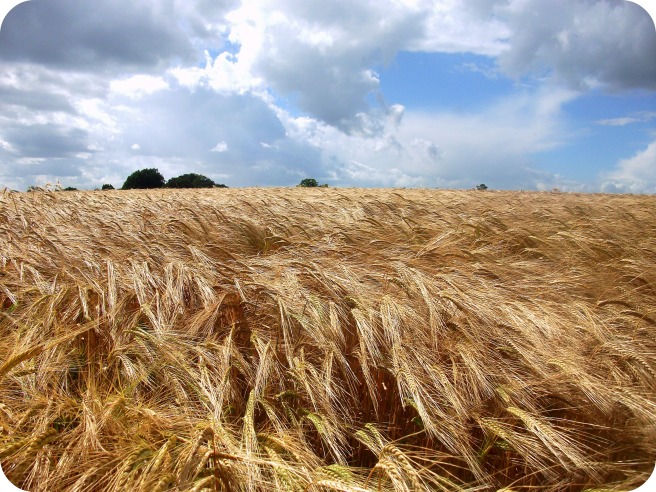
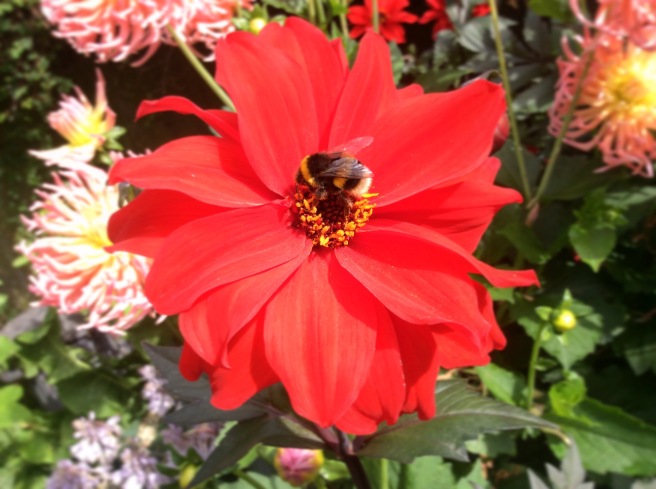 Remember to thank the bees! They need our help!
Remember to thank the bees! They need our help!

Deeeeeelicious post! I’m craving homemade bread, butter and honey. 🙂
Thank you! 🙂 Sometimes the simplest things are the nicest!
Seems like it’s a little house with big food, after all 🙂 🍸
Yes, Ma Ingalls made amazing food!
Bull’s eye! You’ve got me where you want me!
In loving memory
Of the prairie.. 🙂 🍸
I love little house on the prairie books since i was a kid until now
They are really wonderful books!